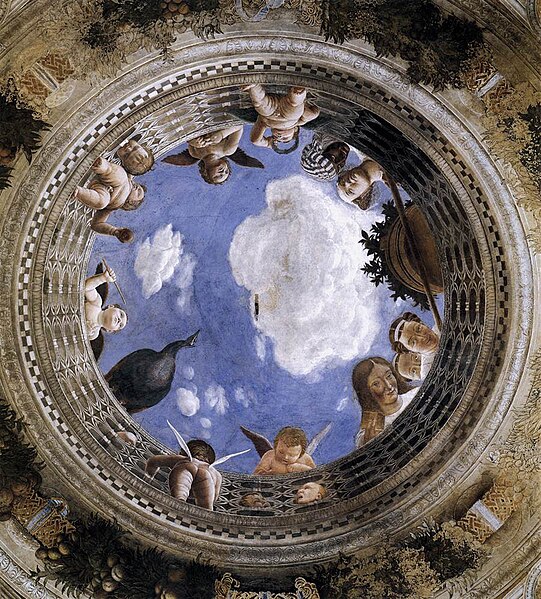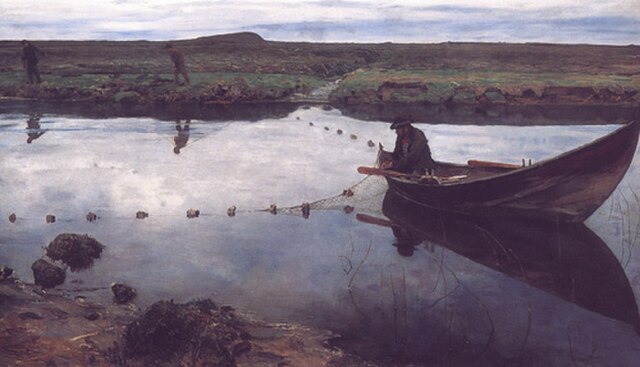Illusionism in art history means either the artistic tradition in which artists create a work of art that appears to share the physical space with the viewer or more broadly the attempt to represent physical appearances precisely – also called mimesis. The term realist may be used in this sense, but that also has rather different meanings in art, as it is also used to cover the choice of ordinary everyday subject-matter, and avoiding idealizing subjects. Illusionism encompasses a long history, from the deceptions of Zeuxis and Parrhasius to the works of muralist Richard Haas in the twentieth century, that includes trompe-l'œil, anamorphosis, optical art, abstract illusionism, and illusionistic ceiling painting techniques such as di sotto in sù and quadratura. Sculptural illusionism includes works, often painted, that appear real from a distance. Other forms, such as the illusionistic tradition in the theatre, and Samuel van Hoogstraten's "peepshow"-boxes from the seventeenth century, combine illusionistic techniques and media.

Triumph of the Name of Jesus, by Giovanni Battista Gaulli, on the ceiling of the Church of the Gesu. The decorations of the vault over the nave date back to the 17th century. The fresco is the work of Giovanni Battista Gaulli, known as Baciccia. The stucco reliefs were executed by Ercole Antonio Raggi and Leonardo Reti, following the drawings of Baciccia who wanted to effect a real continuity between painting and sculpture.
Lord Leighton's Cimabue's Madonna Carried in Procession of 1853-1855 is at the end of a long tradition of illusionism in painting, but is not Realist in the sense of Courbet's work of the same period.
Andrea Mantegna's late-Quattrocento ceiling fresco in the Camera degli Sposi (commissioned by Ludovico III Gonzaga for Mantua's Ducal Palace) is an early example of illusionistic ceiling painting.
Realism in the arts is generally the attempt to represent subject matter truthfully, without artificiality and avoiding speculative and supernatural elements. The term is often used interchangeably with naturalism, although these terms are not synonymous. Naturalism, as an idea relating to visual representation in Western art, seeks to depict objects with the least possible amount of distortion and is tied to the development of linear perspective and illusionism in Renaissance Europe. Realism, while predicated upon naturalistic representation and a departure from the idealization of earlier academic art, often refers to a specific art historical movement that originated in France in the aftermath of the French Revolution of 1848. With artists like Gustave Courbet capitalizing on the mundane, ugly or sordid, realism was motivated by the renewed interest in the common man and the rise of leftist politics. The realist painters rejected Romanticism, which had come to dominate French literature and art, with roots in the late 18th century.

Bonjour, Monsieur Courbet (1854) – a Realist painting by Gustave Courbet
Francisco Goya, Charles IV of Spain and His Family, 1800–01
Eilif Peterssen, The Salmon Fisher, 1889
Henri Biva, c. 1905–06, Matin à Villeneuve (From Waters Edge), oil on canvas, 151.1 x 125.1 cm







